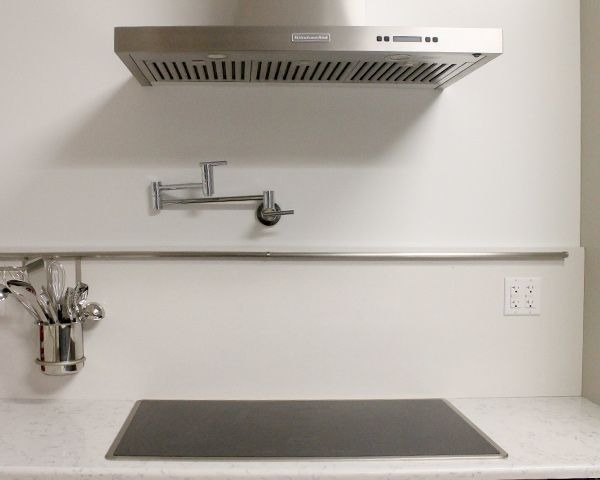What Is... An Induction Cooktop?
Maybe you've seen one of these before — at a friend's house in their fancy new kitchen, at a cooking demonstration in a studio, or at a restaurant with an open kitchen and the latest tech. Or, it may have escaped your notice — a cursory glance would make most people think that was just a really nice electric stove.
But this isn't just any ordinary stove. An induction cooktop functions using electromagnets, which, when in contact with a magnetic surface (like a pan made out of iron or stainless steel) causes the molecules in the pan to move, generating heat, but only within the pan. Turning up the heat setting causes the molecules to move faster, generating more heat in the pan. Sounds fancy? You bet. It's the latest trick in the product lineups of appliance manufacturers, and it may just be the way of the future.
Induction cooktops and burners are much more efficient at transferring heat than their gas and electric counterparts. Induction cooktops are 90 percent efficient, compared to 70 percent for the best electric cooktops and 30 percent for gas. As a result, the surrounding surface stays cool to the touch — meaning any spills won't get baked on and cleanup will be easier. This also means that the room stays much cooler than when using gas or electric cooktops.
Induction, then, is a great choice for people concerned about saving energy and helping the environment.
But it's not just friendlier to the environment; from a cooking standpoint, it has some interesting merits as well. For example, the increased efficiency allows induction cooktops to boil water much more quickly, in some cases up to 45 percent faster. In addition, induction cooktops deliver heat more precisely and quickly than gas or electric countertops. Taking a pot or pan off the stove means it comes off the heat instantly, and turning up the heat happens just as quickly as well.
There are some caveats, however. Induction cooktops will only work with certain types of pans. Metals with poor magnetic properties, such as aluminum and copper, won't work at all with induction technology. Cast-iron and stainless steel work fine, and some cookware is specifically labeled induction-friendly, but you don't necessarily need to shop for these; as long as you have quality cast-iron or stainless steel pots or pans, they should work fine.
If you're shopping for new cookware, how will you know if a pan works with certainty on an induction stove? That's easy. Those refrigerator magnets that keep your shopping lists on the refrigerator can do double duty. Take them with you to the store, and as a simple test, if they stick to a pan, it will work with your fancy new stove.
Lastly, induction cooktops are still relatively expensive: Low-end models start at about $1,300 for just a cooktop. If you need a range with an oven, that will run for about $1,600 to $2,800. Still, if you're considering a cooktop for a new space that doesn't have easy access to gas, induction technology is definitely worth considering.
Will Budiaman is the Recipe editor at The Daily Meal. Follow him on Twitter @WillBudiaman.
